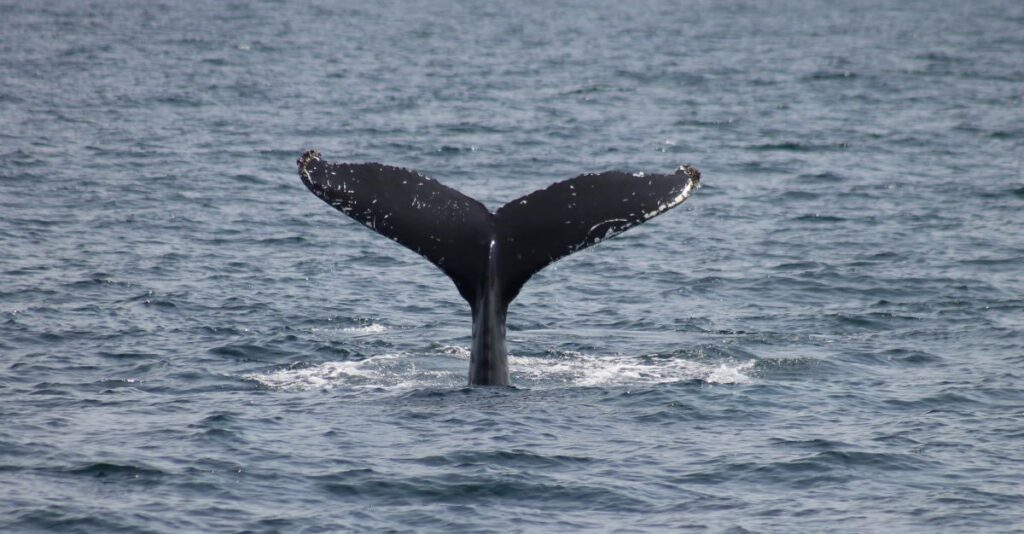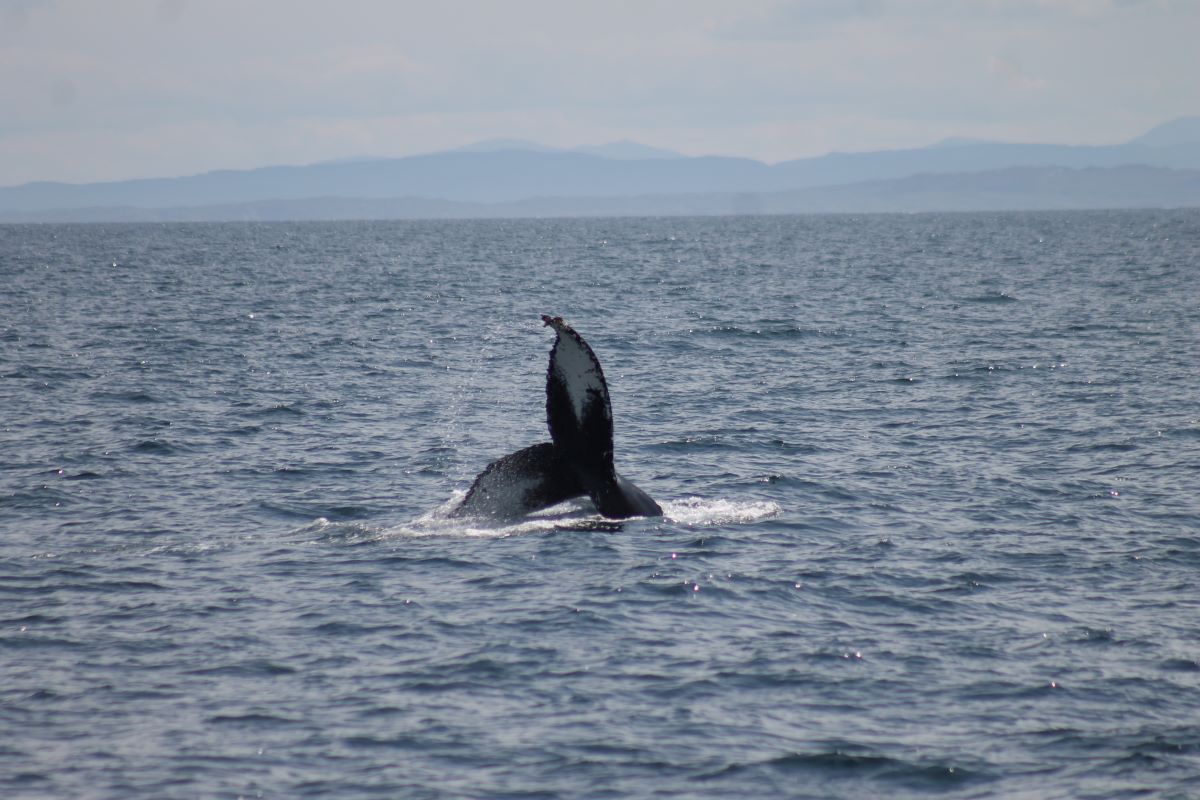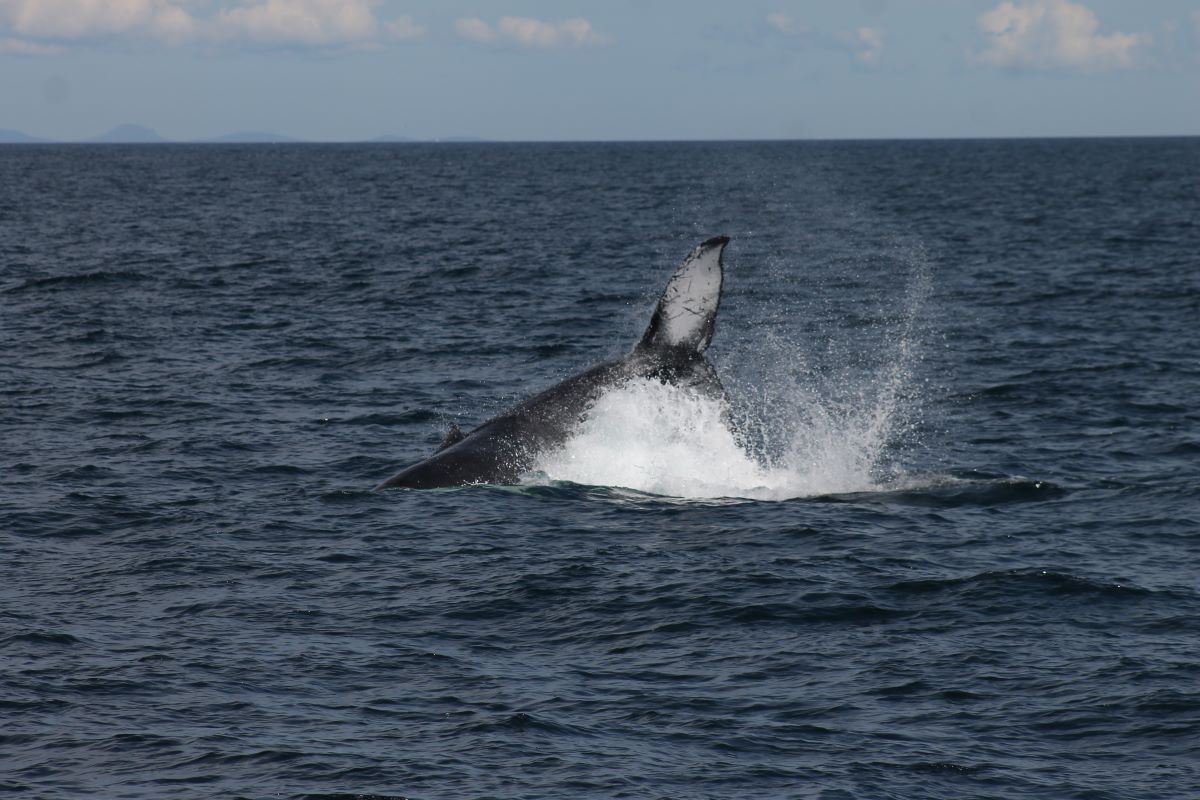
Two rare humpback whales spotted off Scottish coast
Two humpback whales, including one never seen before in Scottish waters, were filmed during a rare encounter with a tour boat.
On a cruise which was sailing up Gunna Sound guests aboard a Hebrides Cruises vessel experienced the once-in-a-lifetime double discovery with the majestic beasts.
The two whales, including Sinclair – a whale who has never been recorded in Scotland before – were spotted around 13-miles from the Gunna Sound when the whales swam underneath the boat.
‘A guest onboard spotted a big blow in the distance as we were making our way towards Gunna Sound,’ said Hannah Lightley, Wildlife Guide for Hebrides Cruises.
‘There were lots of squeals and excitement onboard as I then confirmed this as a humpback whale. We then observed the animal surfacing several hundred metres in front of Elizabeth G with multiple tail flukes.

Barrett the whale. Credit: Hannah Lightley, Hebrides Cruises Wildlife Guide.
‘Whilst we were immersed in the sighting, Skipper Alasdair then spotted another humpback whale around a kilometre away in the opposite direction, so we then headed towards this animal where it was tail slapping multiple times.
‘We were 13 miles Northwest of Gunna Sound in around 140m of water.
‘Once closer, we switched the engines to neutral and that’s when we had the most incredible encounter of the humpback associating with the boat and eventually surfacing just metres from the bow and then swimming under the boat.’
Photos of the new sighting were then sent to Lyndsay McNeill at Scottish Humpback ID, who manages the Scottish Humpback Whale catalogue.
The first humpback encountered was confirmed as ‘Barrett’ number 100 in the catalogue.
The second whale, however, was confirmed as new to Scottish waters and has subsequently been named ‘Sinclair’ after Hebrides Cruises Skipper, Alasdair Sinclair.
Expert whale watcher, Lyndsay said: ‘Although rare, humpback whales are now being sighted with increasing regularity in Scottish waters.
‘We’ve seen around 10 new individuals a year as well as a few familiar tails back in the same areas. Many of our matches from the Hebrides have been from Iceland.
‘Every tail fluke is as unique as a human fingerprint and is used to identify the different whales.

Sinclair. Credit: Hannah Lightley, Hebrides Cruises Wildlife Guide.
‘Photographs are used in a technique called ‘Photo-ID’ – when a whale is identified in a specific location, we can look and see where else that whale has been photographed and build a better picture of their movements.
‘Humpbacks are known to migrate through Scottish waters between their feeding and breeding grounds.
‘Much of what we know about these magnificent creatures has come from enthusiastic members of the public or ‘citizen scientists’ reporting what they’ve spotted and using a technique called Photo-ID to identify whales, building a better understanding of their movements.’
Read more Wildlife stories here.
Subscribe to read the latest issue of Scottish Field.
TAGS

